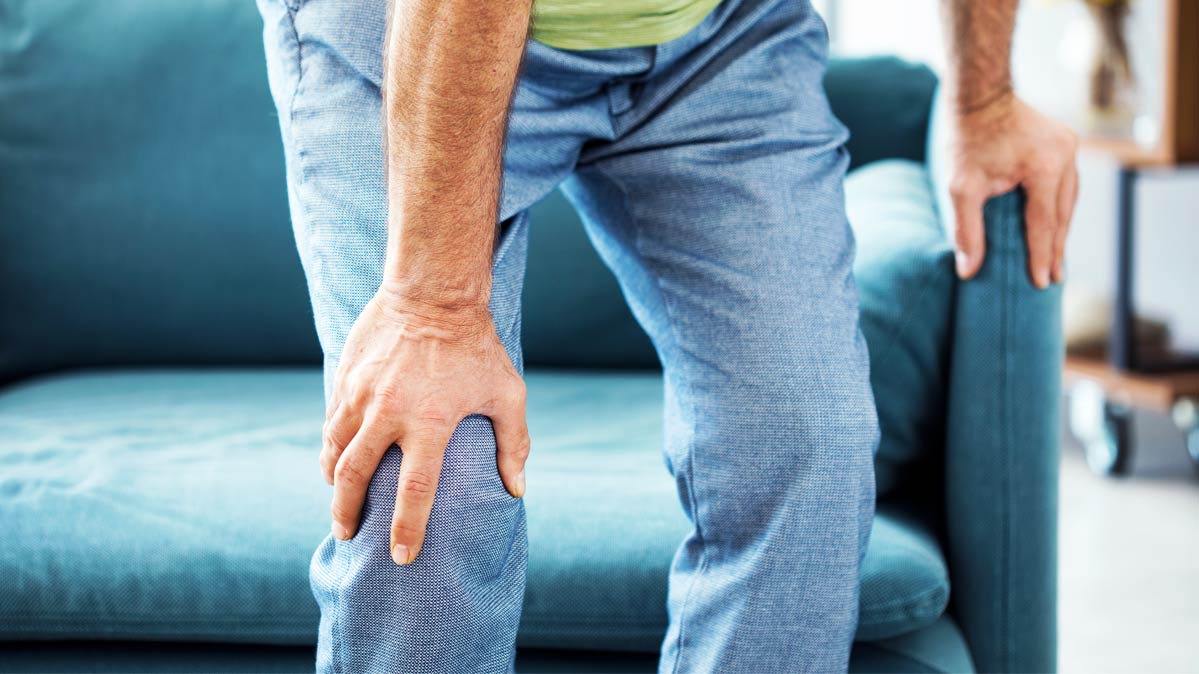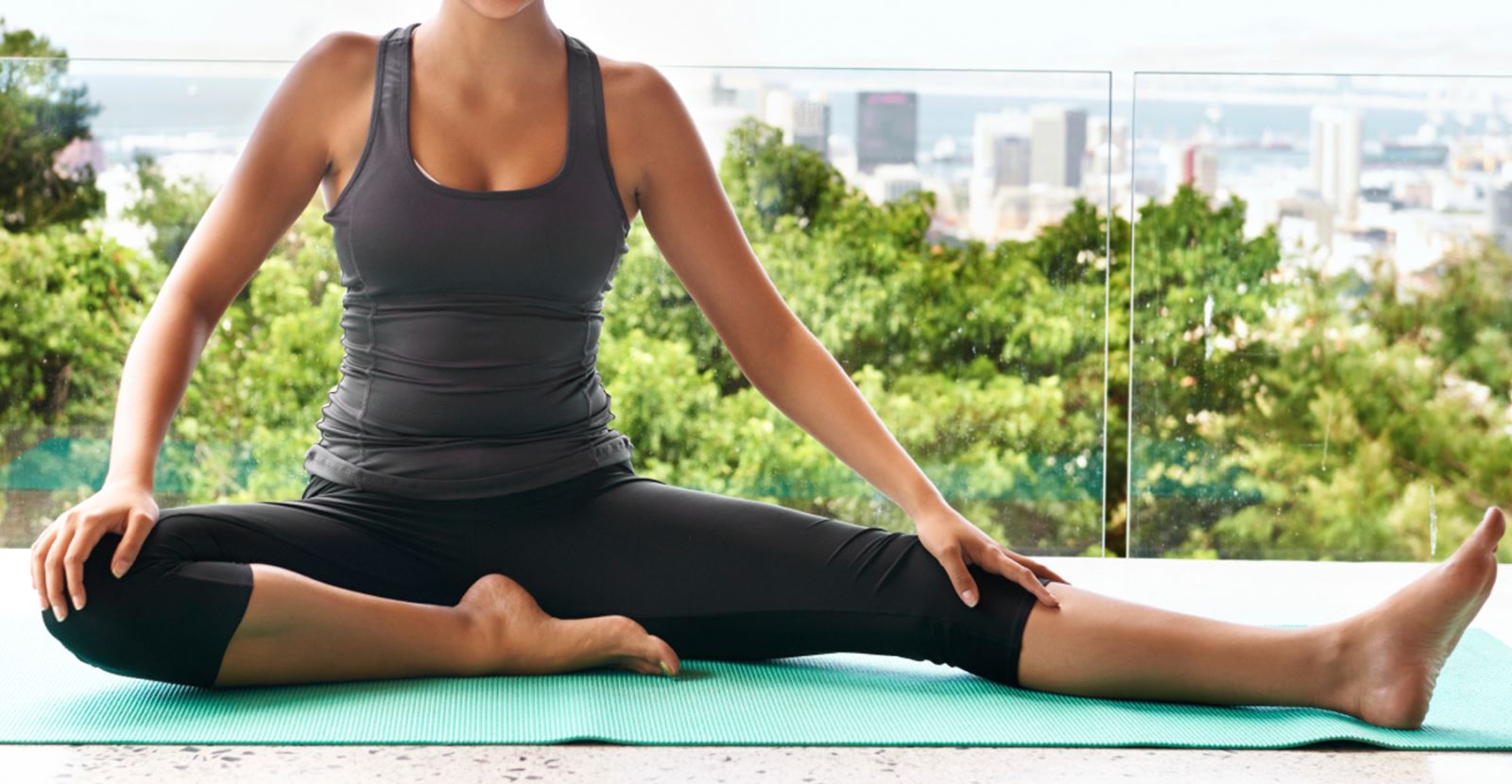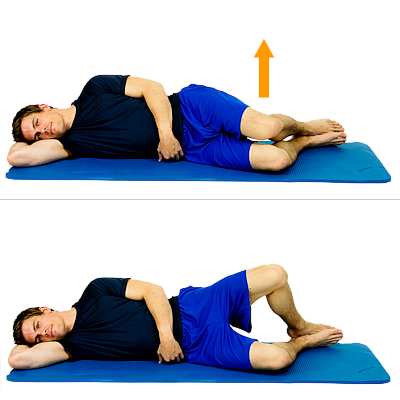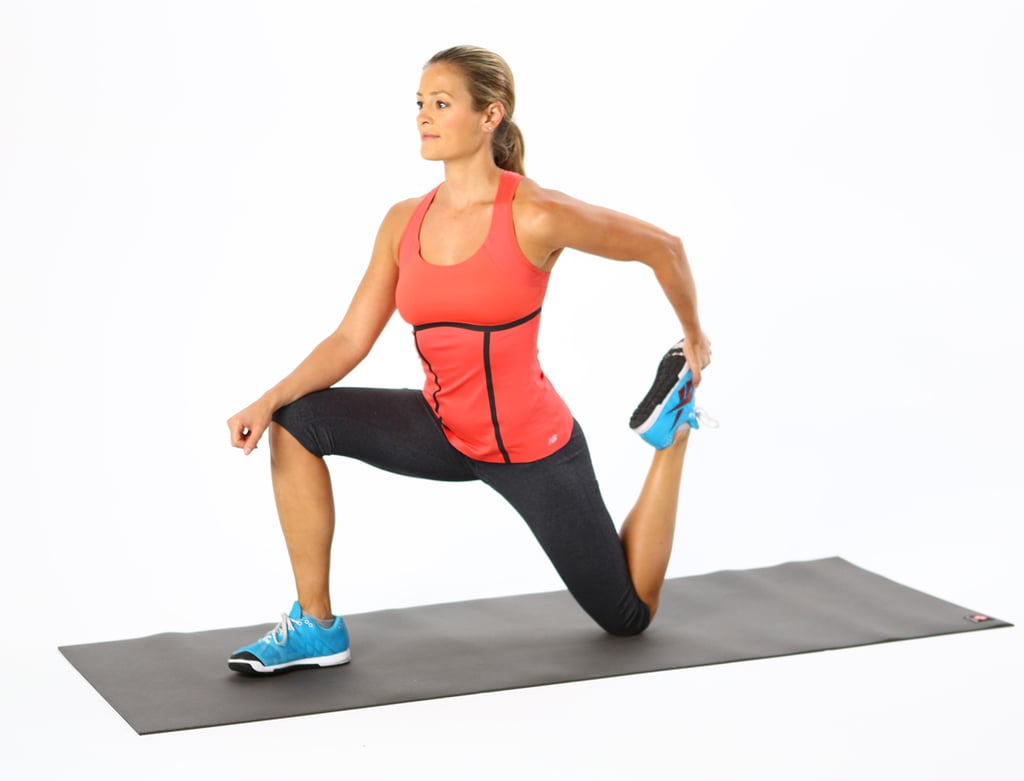Knee pain: 6 natural treatments, including exercises
 |
Ron Torrance II, D.O, a Sports Medicine Trained Physician at the New ReGeneration Orthopedics of Florida, says he commonly sees knee pain-related conditions among his younger patients who are generally fit — especially runners, female athletes and anyone who uses their legs in other repetitive ways
Dr. Torrance feels that an often overlooked aspect of treating knee pain is the need for different interventions depending on someone’s current fitness level. For example, a young woman who experiences knee pain after running for several months will benefit from a much different treatment approach than an older man with osteoarthritis of the knees.
When treating knee pain injuries, Dr. Torrance first looks at his patients’ symptoms and then discusses their lifestyle and exercise habits. Knee pain treatment should always depend on which specific part of the knee is injured and the underlying cause of the pain. Even if medications and corrective devices like knee braces are needed to treat knee pain, exercises, stretching and other functional medicine practices should also be incorporated to help with recovery and injury prevention.
Aside from resting the knee after an acute injury, conventional treatments for chronic knee pain that lasts more than several weeks include: Rest, Compression, icing and elevation of the affected knee, Physical therapy and specific exercises (more on these below), Use of orthotics or a knee brace if needed, Pain medications and Steroids, such as an injection used to reduce inflammation; hyaluronic acid might be used to lubricate the knee and treat swelling.
Platelet-rich plasma (PRP) can be used to promote repair and growth of tissues in the knee; PRP involves injecting different growth factors into the damaged area to reduce inflammation and promote natural healing processes
Rarely, if someone is experiencing chronic knee pain that doesn’t improve with other treatments, surgery may be needed to help repair a tear; but surgery is considered a last resort option.
6 Natural Treatments for Knee Pain Relief + Prevention
 |
1. Exercise & Proper Time to Recover
Weak muscles and stiffness are two of the leading problems associated with knee injuries. So while exercise is important for keeping your knees healthy, you also need to rest enough and give your body time to heal. Some people will need to take a break from most exercise or several weeks to heal a damaged knee, or at least limit high-impact activities for a period of time. Before trying more drastic treatments, see if taking a few days off from your usual exercise helps. If you see improvements with rest, then you should plan to decrease your mileage/length of workout when you return.
To protect yourself from injury, always warm up lightly and stretch before exercise. Before engaging in running, biking or another knee-bending exercise, walk a quarter- to a half-mile. After your exercise, be sure to stretch again and then to give yourself enough time to recover properly, at least 1–2 days (especially after intense workouts).
Doing low-impact exercises is best for people with chronic knee pain or conditions that affect the joints. Examples of low impact workouts include swimming, water aerobics, brisk walking, elliptical training, cycling and yoga.
On the other hand, these activities can negatively impact the knees and should be avoided if you’re having knee issues such as running, jumping, skiing, intense biking, activities that involve repetitive movements of the legs and high-impact sports.
2. Physical Therapy (Stretching & Exercising the Knees)
If you’ve experienced weakness or loss of flexibility in your knees, or other limitations that affect your ability to move, it’s a good idea to work with a physical therapist, trainer or coach who can help you with conditioning and recovery. A therapist (such as a neurokinetic therapist) can help you gradually build strength in your lower body and also work on achieving proper form to reduce your risk for future injuries. Having a gait analysis done can be beneficial for correcting pronation problems and other postural issues.
Performing exercises that help strengthen the quadriceps, hamstrings, lower back and hips can all support the knees. In addition to building strength and stretching, work on balance and stability exercises helps to train the muscles in your legs to all work together. This can reduce the risk for falling and developing compensations that take a toll on the knees. Your therapist might also recommend using both cold and hot treatments to ease pain and support healing after exercising your knee, such as ice packs or a warm compress applied to the painful area.
3. Good Footwear, Insoles & If Needed, a Knee Brace
In general, people with knee pain should try to avoid wearing sandals, flip flops, Crocs™, boat shoes, high heels and boots. These types of shoes are not very supportive and can aggravate back, knee or hip pain.
If you’re having knee pain when exercising and suspect your shoes might be contributing to the problem, it’s helpful to visit a running store to speak with a specialist about your specific stance, stride and needs. You can have a free, simple test done on your feet that will identify which types of shoes are best for your posture and gait. You can also visit a podiatrist (a doctor that specializes in treating foot-related problems) for custom insoles.
Superfeet insoles, an over-the-counter insole option that can be purchased online, are recommended by certain doctors, including Dr. Ron Torrance. These insoles are sturdy and provide support for the knees, unlike some over-the-counter insoles that are cushiony but not as stable. Soft insoles are not always as helpful for some people because they don’t help with stabilizing the ankles or knees, which can further aggravate knee pain.
4. Foam Rolling
Foam rolling is very beneficial for breaking up adhesions in the legs that can contribute to knee pain. Dr. Torrance recommends foam rolling the quadriceps and IT bands to help with knee pain relief, especially if you’re a runner or avid exerciser. You can also use a foam roller on other muscles that support the knees, especially the gluteus maximus (the largest muscle in the buttocks) and the tensor fasciae latae (a muscle that runs along the outer edge of the hip).
You can try both soft or hard foam rollers, but some people with pain find that using a soft roller is more manageable, especially when starting out with foam rolling. While rolling, if you find a place that really hurts, take a couple minutes to sit there and let tension in the the muscle start to ease up. This will feel uncomfortable at first but should gradually go away as you loosen up the tight area. Remember, you should never use a foam roller to roll over a large joint like the knee, as putting too much pressure here can cause injury.
To foam roll your quads — Place your foam roller on the floor and lie on your stomach with the front of one thigh over the foam roller and the other leg on the floor for support. Roll the entire front of the thigh from the top of the hip to the top of the knee cap in an up and down motion. Do this for about 2 minutes, ideally every day.
To foam roll your IT band — Place your foam roller on the floor. Lie on your side with the outside of your thigh with the outside of the thigh over the foam roller and your other leg in front for support. Roll the entire outside of your thigh from your pelvis to your knee in an up and down motion. Maintain your abs tight and proper low back posture during the exercise. Do this for about 2 minutes each day.
To foam roll your hamstrings — While lying face up, place the back of one thigh over the foam roller and the other leg on the floor for support. Roll the entire back of your thigh from the bottom of the buttock to your knee in an up and down motion. Do this for about 2 minutes each day.
To foam roll your adductors — Lie on your stomach with the inside of one thigh over the foam roller and your other leg straight on the floor for support. Roll the entire inside of your thigh from your groin to your knee in a side to side motion for about 2 minutes.
5. Eating an Anti-Inflammatory Diet
Eating a nutrient-dense diet is important for overall joint health for a few reasons: it helps you to maintain a healthy weight (which decreases strain on your joints), reduces inflammation, improves recovery from exercise and lowers the chances you’ll develop a condition like arthritis or osteoporosis.
Consume plenty of fruits and vegetables, especially those high in vitamin C, sulfur and antioxidants like leafy greens, carrots, peppers, berries, onions, broccoli, garlic, asparagus and cabbage.
Get omega-3 fatty acids from wild-caught fish, especially benefit-packed salmon. Other food protein sources include grass-fed meat, pasture-raised poultry, fish like sardines or mackerel, fermented dairy products, and eggs.
Include healthy fats in your diet like coconut oil, olive oil, ghee, grass-fed butter, avocado, nuts and seeds.
Drink bone broth or use protein powder from bone broth.
Add antioxidant-packed herbs and spices to your meals.
Limit or avoid excess sugar, hydrogenated oils (soybean oil, cottonseed oil, even canola oil), processed/refined grains, flour products, synthetic additives, processed meats and fast food.
6. Anti-Inflammatory Supplements
Certain herbs and supplements can help to reduce inflammation and support recovery from injuries or degenerative diseases. Some of the best supplements for knee pain include:
Turmeric
Glucosamine and chondroitin
Bone broth, or bone broth protein
Collagen protein
Omega-3 fatty acids
Top 12 Knee Pain Exercises & Stretches
The type of knee exercises that will help you find relief from knee pain depends on the underlying cause of your condition. Dr. Torrance has found that for his patients to get the most results from knee pain exercises and stretches, they first have to identify if they’re generally more strong or more flexible.
If you’re legs are very flexible but not so strong, you want to work on strengthening and activating the correct muscles in your legs to support your knees (especially your quads). On the other hand, if you’re strong but also tight, you want to improve your flexibility/mobility. If you have a condition that causes pain, gently working on improving both strength and range of motion is important.
Below are some of Dr. Torrance’s favorite (that he uses to treat his patients with knee pain) knee strengthening exercises and stretches:
 |
1. Clam Shells — This is a great exercise for younger athletes and females who have weak gluteus medius muscles. It’s also helpful for those who have flat feet, which creates stress in your ankle that travels up to your knees. Start by laying on your right side with your knees bent and feet and hips stacked. You want your feet to be in line with your butt and your shoulders stacked. Engage your core and keep your feet together as you raise your left knee out to the side while keeping your right knee down on the floor. Hold your lifted knee for one second, then lower and repeat. Try to complete 20 reps on each side.
2. Quad Sets — The quadriceps are the muscles above the knee that help to control patella tracking, so it’s important to strengthen them. To perform quad sets, lay on your back and put a rolled-up towel behind your affected knee. Activate the thigh muscles in order to straighten the knee and hold the contraction for 5 seconds. You can activate your quad by visualizing your knee pushing down into the ground (you’ll also be able to see your quad contract if you watch it). Release after 5 seconds and repeat 10 times on each side.
3. Straight Leg Raises — Also great for strengthening the quads. Lay on your back and stretch both legs out on the floor. Lift the right leg up to about 6 inches off the floor and hold the contraction for 10 seconds, then gently return it to the floor and repeat on the other side. Try to complete 5–10 reps on each side.
4. Pistol Squats (also called single leg squats) — Stand with your feet hip-distance apart. Keeping your balance, start with your left toe touching the ground and focus on something in front of you that is not moving. Begin to sit back on the right leg while raising the left foot and extending the left leg in front of you. Go down as far as you are able to, lowering for about 5 seconds, then lift back up. Repeat about 10 times on each side.
5. Hip Raises (also called glute bridges) — Lay on your back on the floor with your knees bent. Your knees should be hip-distance apart and heels should be close to the butt. Push off with the heels, lift the hips towards the ceiling and hold for 5–10 seconds. Release and repeat 10–20 times.
6. Step-Ups — Start standing with feet hip-distance apart. With your right foot, step up onto the bench or step and follow with the left foot. Step back down with the right foot and alternate feet so the next one will start with the left foot and so forth. Do 20 reps.
7. Lunges (backward or forwards) — Stand with feet hip-width apart, then step backwards with your right foot and lunge down, making sure that your knee does not extend beyond your ankle. Push off with your heel back to starting position. Repeat on the other side. Do 10 on each leg. You can do the same stepping forward instead of backwards, which would be a normal forward lunge.
 |
8. Kneeling Quad Stretch — Bring one shin/knee down to the ground and bend the opposite leg so the knee is right over the ankle and thigh in parallel to the ground. Use a blanket under your knees/shin if you’re uncomfortable. Try to reach your arm back and grab the foot of the leg that’s on the ground. Bring your heel closer to your thigh to stretch your quad. Hold for at least 20–30 seconds on each side.
9. Glute Activation — Lie on your stomach with your knees bent and turned outward. Push the heels together to contract your buttocks. Do not arch your lower back. Hold the isometric contraction for the required time. Repeat about 10 times in a row, completing 3 sets per day.
10. Side Step With Band — Wrap a mini-band around your legs just above your knees. Turn your feet out slightly and bend your knees just deep enough so they are over your toes. Keep your back straight and hips slightly bent. Make sure you bend the knees in line with the feet. In this position, side step nice and slow while maintaining the half-squat and the slight external rotation of the legs. Step in one direction, then come back to work both side. Complete 10 times in a row, working up to 3 sets daily,
11. Yoga Exercises — Dr. Torrance recommends benefit-rich yoga to his patients with knee pain because it helps stretch nearly every part of the legs and builds strength. Some of the best yoga poses for knee pain include: child’s pose, hero’s pose, low lunge, crescent lunge, warrior 1, warrior 2 and eagle poses (where one leg is crossed over the other).
Precautions
When is it time to see a doctor if you’re experiencing knee pain? Talk to your doctor, physical therapist or an orthopedist if you notice lots of swelling that won’t go away, if you can’t extend or flex your knee, or if you’re having a hard time getting around and going about your normal activities.
If you’ve have a knee injury in the past, then you’re more likely to experience knee pain again in the future, especially if you never got treatment and fully recovered. Back off of any exercise that increases pain, make sure you take time to recover from tough workouts, and get your knee evaluated if symptoms last more than two weeks./.
VNF/Dr.Axe
Recommended
 Handbook
Handbook
Vietnam Moves Up 8 Places In World Happiness Index
 Handbook
Handbook
Travelling Vietnam Through French Artist's Children Book
 Multimedia
Multimedia
Vietnamese Turmeric Fish among Best Asian Dishes: TasteAtlas
 Handbook
Handbook
From Lost to Found: German Tourist Thanks Vietnamese Police for Returning His Bag
Popular article
 Handbook
Handbook
Prediction and Resolution for the Disasters of Humanity
 Handbook
Handbook
16 French Films To Be Shown For Free During Tet Holiday In Vietnam
 Handbook
Handbook
Unique Cultural and Religious Activities to Welcome Year of the Snake
 Handbook
Handbook



